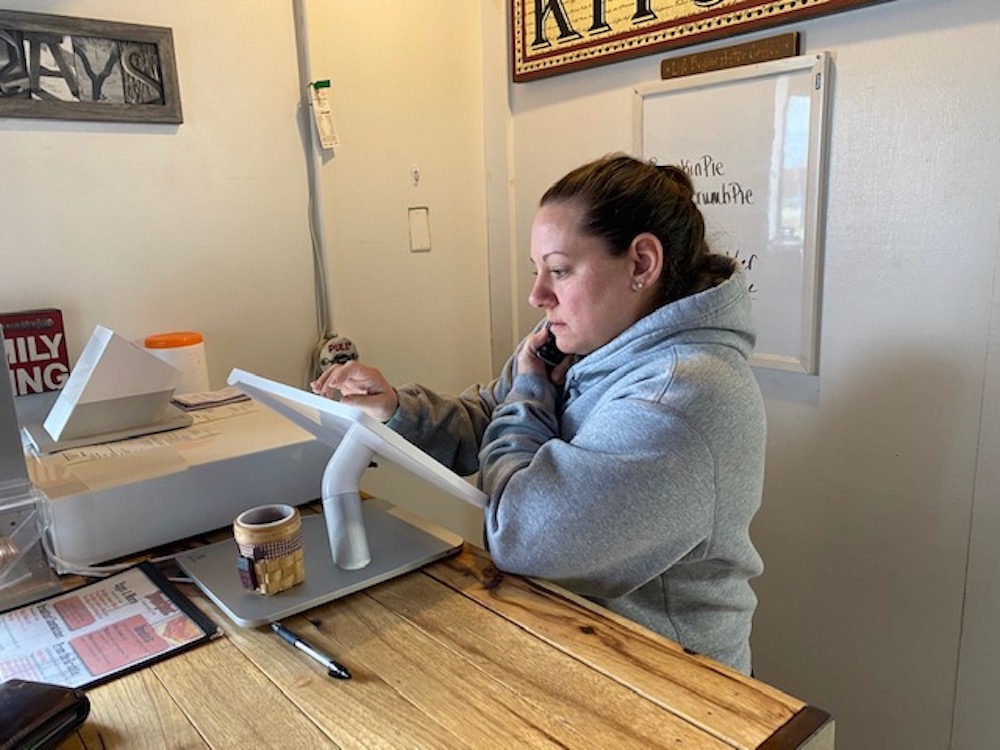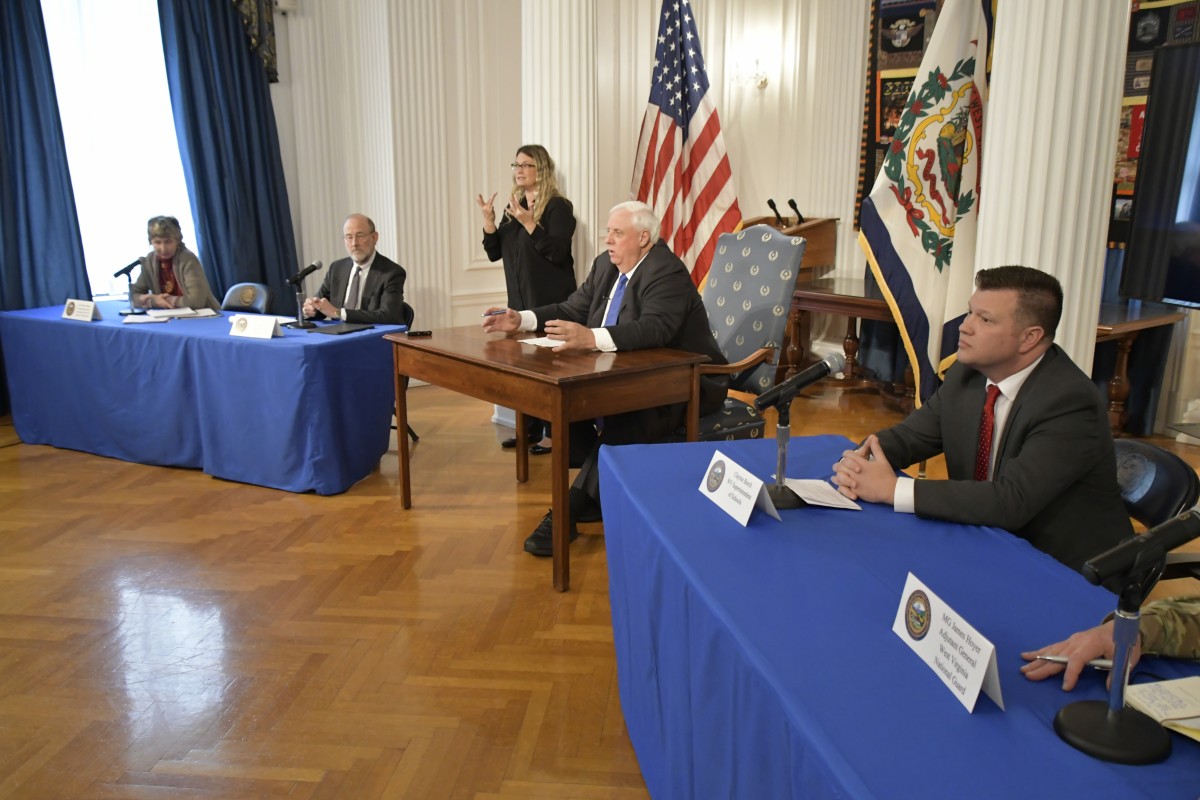President Trump has mentioned telehealth as part of the response to COVID-19. That approach raises serious questions about the digital divide and rural residents’ lack of broadband access.
Maybe there should be a revised Hippocratic Oath for the digital age. First, “take care that they suffer no hurt or damage.” Second, turn down the hype! This is particularly true with telehealth and coronavirus (COVID-19).
Scanning news headlines in this last month finds a host of war-themed headlines pitting telehealth against the coronavirus. “Telehealth can help fight the novel coronavirus.” “Combating the coronavirus with telemedicine.” “Coronavirus and the rise of telemedicine.” These headlines convey upon telehealth exaggerated powers. Temper the hype with some reality checks.
“COVID-19 infection requires a physical sample from the person – a throat swab, stool sample, blood drawing – most of these you would want trained personnel to collect,” says Anne Chang, director of marketing for telehealth vendor VSee. “Telehealth medical peripherals aren’t going to be of much help here. Virtual care where it is today is not going to be that helpful for identifying COVID-19 cases.”
The infection also can be diagnosed from a combination of symptoms, risk factors and a chest CT scan. Portable CT scanners can be sent with telehealth carts that have various USB- or Bluetooth-connected devices. Electronic stethoscopes connected this way can allow healthcare personnel at another location to listen to patients’ lungs. Carts can go to clinics or remote facilities and be linked by broadband to county or regional hospitals.
The Wilson County, North Carolina, Health Department (interviewed here) initiated telehealth programs that nurse practitioner Kim Almkuist runs. She has only one Bluetooth-enabled stethoscope. She said, “One of these devices cost between $2,000 to $3,000, and few people can afford the expense. So patients have to travel to us. If more communities could buy these telehealth devices, quarantined COVID-19 patients could receive quality telemedicine care.”
Gene Scott, outside-plant engineer at City of Wilson’s Greenlight public broadband network, says the area’s hospitals could be a telehealth resource. “There’s Duke [University] about an hour and a half away from us, East Carolina University. And Chapel Hill, UNC, is less than an hour away — all three with top-notch hospitals.”
Officials could possibly link these medical resources, clinics and urgent care facilities with broadband, distribute quarantined patients equitably around the region and provide quality telehealth services to individuals.
Ironically, it is with the uninfected that we see telehealth indirectly contributing to the fight against the coronavirus.
Bringing It Home with Telehealth
The public faces a lot of cost, time and hassle getting to a doctor to find out they’re OK. Telehealth saves healthcare workers time and resources they could be spending on the infected.
Last week, I put telehealth to the test. I contacted my doctor’s office and requested to schedule an in-person visit immediately, saying that I had concerns about the virus.
I was offered a same-day telehealth visit, as is the office’s policy for anyone worried about the coronavirus or having regular flu symptoms. On the phone, they did a preliminary screening, and when I connected to the telehealth nurse, she went through a more detailed Q&A to ascertain a low likelihood of me having the virus. Ten minutes and I was done. The virus incubation period is 14 days, so I can go get a second telehealth evaluation then.
Consumer-Level Equipment
Hospital-quality digital stethoscopes are pricey, but there are lower-cost alternatives. For example, Israeli FDA-certified device manufacture TytoCare offers a suite of digital medical exam tools including a stethoscope for $300. Three types of telehealth users can cost-justify the purchase for uses, besides treating coronavirus patients.
First, parents can find uses for these consumer devices, particularly during cold and flu season. They can be useful all year long for younger children, who frequently need to have ears, nose, throats and lungs checked. Sufferers of chronic diseases such as emphysema, asthma and pulmonary disease could be frequent users of these devices. And seniors, similar to kids, are often needing ENT&L exams.
Since telehealth is not possible without broadband, advocating for funding and deployment of telehealth means engaging in a covert war against coronavirus by making it easier to work and live at home. If local and national policymakers drive education, work and entertainment to the home to fight coronavirus, we could compensate by building more broadband.
Beware Telehealth’s Achilles’ Heel
Few of the headlines proclaiming telehealth as the potential slayer of coronavirus mention that the giant killer has an Achilles’ heel. Actually, two of them – U.S. broadband is unreliable, and digital inequity is widespread.
A third of rural residents have no broadband. Up to 45 percent-50 percent of lower-income communities don’t have service or can’t afford broadband. Many with broadband have under-performing access or infrastructure. Expect data traffic to slow down significantly when huge numbers of office workers become homeworkers. The problems with our aging infrastructure will become more apparent.
How can telehealth firms determine which prospects have broadband when the FCC‘s maps are completely inaccurate? Commercial firms don’t want to tell us who has service, so they can maintain a competitive advantage. But that means it’s harder to know where we need the most intervention. Karl Bode writes in DSL Reports, “Broadband incumbents consistently fight against accurate broadband availability- and price-mapping.”
We’re a country that’s trying to save itself from a pandemic, but where goes our broadband also goes our telehealth capabilities. People who are most likely to be lacking digital technologies – the old, the rural, the urban poor – are in peril thanks to digital inequities. As the headlines blare out that telehealth can save us, first do no harm. Tone down the hype. And turn to the people with the problem to find solutions.
Burcu Baykurt, assistant professor of urban futures and communication at the University of Massachusetts, Amherst studied five years of Kansas City’s efforts to overcome the digital divide.
Baykurt observes that “Many public policymakers, elected officials seem to have biases against directly involving in the solution those people who are hurt directly by the digital divide. When it comes to understanding technology and creatively using technology, I turn to people who live in poor conditions first because they understand how to survive. They know how to use those technologies in the most creative ways possible.”
Bottom line, closing the digital divide is a key element of beating the coronavirus. But time is short. Rural Americans suffering from the digital divide have to have seats at the table and help design the solutions.
Craig Settles is a community broadband consultant and writer.
This article was originally published by The Daily Yonder.



